WhatsApp: 15671598018 E-mail: info@SintecLaser.com
WhatsApp: 15671598018 E-mail: info@SintecLaser.com

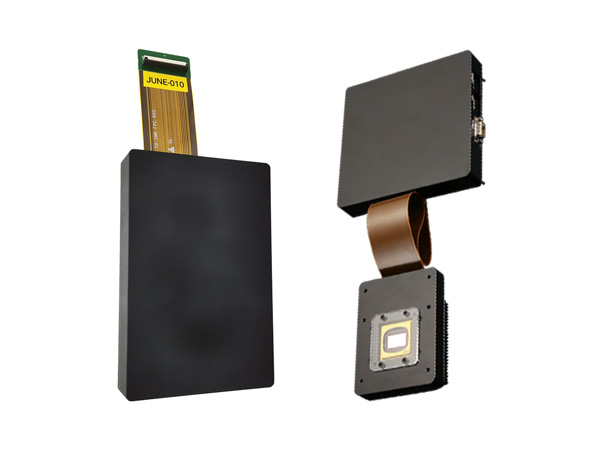
A spatial light modulator is a device that modulates the spatial distribution of light waves, changing the amplitude or intensity, phase, and polarization state of the spatial distribution of light under the control of an electrical drive signal. Spatial light modulator is a key device in modern optical fields such as real-time optical information processing, adaptive optics and optical computing.
Our spatial light modulator (SLM) is based on reflective liquid crystal on silicon (LCOS) micro-display technology. The SLMs enable optical phase modulation freely and generate arbitrary 2D phase patterns on a LCOS pixel-by-pixel basis. SBN-RD series are our latest Full-HD LCOS model. The SLMs are suitable for various scientific and industrial applications, including beam shaping, wavefront correction and optical manipulations.
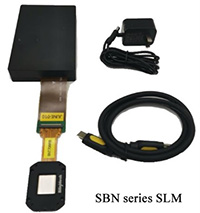
Applications:
HUD
Micro-projection
Holographic imaging
Optical communication
Optical forceps
Light field regulation
Adaptive optics
Beam shaping
Laser processing
Product model naming rules:
Serial Number - Modulation Type - modulation Mode - Resolution - Pixel Size - Window - Optional wavelength - Others
For example: SBNA-PP2K-6355-NIR-H, SBNA series, Phase modulation, analog control, resolution 1920*1080, pixel 6.3m, window 0.55, wavelength NIR-H 1064nm (high power version)
| Serial number | Modulation type | Modulation mode | Resolution | Pixel size | Window size | Optional wavelength |
| SBNA SBNB SBNC SBNE | A=Amplitude P=Phase | P=Analog D=Digital | 4K=4090*2160 4K2=3840*2160 2K=1920*1080 1K=1280*720 | 36=3.6mm 38=3.8mm 45=4.5mm 60=6.0mm 63=6.3mm 80=8,0mm | 26=0.26” 39=0.39” 52=0.52” 55=0.55” 62=0.62” 69=0.69” 70=0.70” 72=0.72” 78=0.78” | VIS=430nm-750nm NIR=1000nm-1100nm TEC=1530nm-1565nm Specific wavelength, such as 1064nm |
This series of spatial light modulators (SLMS) are a high-resolution version of digital silicon based liquid crystals (LCoS). It provides up to 4160×2460 resolution and allows dynamic adjustment of modulation region, so it is suitable for multi - mode or single - mode high - resolution optical system applications.
Features/Advantages:
Easily calibrated
Digital drive, flexible modulation
Easy to use, plug and play
Good linearity of amplitude/phase gray curve
High resolution, high phase accuracy and good phase stability
| Serial number | Modulation type | Modulation mode | Resolution | Pixel size | Window size | Operating wavelength |
| SBNA | A=Amplitude P=Phase | D=Digital | 4K=4096*2160 | 38=3.8mm | 70=0.7” | VIS=430nm-750nm NIR=1000nm-1100nm TEC=1530nm-1565nm |
| SBNB | A=Amplitude P=Phase | D=Digital | 4K2=3840*2160 | 36=3.6mm | 62=0.62” | VIS=430nm-750nm NIR=1000nm-1100nm TEC=1530nm-1565nm |
| SBNC | A=Amplitude P=Phase | D=Digital | 4K=3840*2160 | 45=4.5mm | 78=0.78” | VIS=430nm-750nm NIR=1000nm-1100nm TEC=1530nm-1565nm |
This series of spatial light modulators (SLMS) are a high refresh rate version of analog silicon based liquid crystals (LCoS). It allows dynamic adjustment of the modulation region and is suitable for multimode or single-mode high resolution optical system applications. Its ability to accurately control wavefront phase is applicable to various applications of optical field modulation.
Features/Advantages:
Analog drive
Low power consumption
High contrast
High refresh rate
| Serial number | Modulation type | Modulation mode | Resolution | Pixel size | Window size | Operating wavelength |
| SBNB SBNC | A=Amplitude | P=Analog | 2K=1920*1080 | 45=4.5mm | 39=0.39” | VIS=430nm-750nm NIR=1000nm-1100nm |
| SBNC | A=Amplitude | P=Analog | 1K=1280*720 | 45=4.5mm | 26=0.26” | VIS=430nm-750nm NIR=1000nm-1100nm |
| SBNC | A=Amplitude P=Phase | P=Analog | 2K=1920*1080 | 60=6mm | 52=0.52” | VIS=430nm-750nm NIR=1000nm-1100nm TEC=1530nm-1565nm |
This series of spatial light modulators (SLMS) simulate regular versions of silicon-based liquid crystals (LCoS). It has the advantages of high phase stability, good phase gray linearity and high reliability, so it is suitable for various application fields of optical field modulation.
Features/Advantages:
Analog drive
Phase stability
Good phase linearity
Low power consumption
| Serial number | Modulation type | Modulation mode | Resolution | Pixel size | Window size | Optional wavelength |
| SBNB | A=Amplitude P=Phase | P=Analog | 2K=1920*1080 | 63=6.3mm | 55=0.55” | VIS=430nm-750nm TEC=1525nm-1572nm |
| SBNA | A=Amplitude P=Phase | P=Analog | 2K=1920*1080 | 80=8mm | 72=0.72” | VIS=430nm-750nm NIR=450nm-10640nm NIR-H=1064nm(High power version) TEC=1525nm-1572nm |
| SBNC | A=Amplitude P=Phase | P=Analog | 2K=1920*1080 | 80=8mm | 69=0.69” | VIS=420nm-760nm TEC=1530nm-1570nm |
SBNE series spatial light modulator (SLM) is a product mainly developed for teaching and research in universities. It is the regular version of digital silicon based liquid crystal (LCoS). The control signal from processor to each pixel is in digital form, without digital to analog conversion. Its driving system is simple and compact, and the anti-noise performance is outstanding.
Features/Advantages:
Easily calibrated
Digital drive, flexible modulation
Easy to use, plug and play
Good linearity of amplitude/phase gray curve
High resolution, high phase accuracy and good phase stability
| Serial number | Modulation type | Modulation mode | Resolution | Pixel size | Window size | Optional wavelength |
| SBNE | A=Amplitude P=Phase | D=Digital | 2K=1920*1080 | 63=6.3mm | 55=0.55” | VIS=430nm-750nm NIR=450nm-10640nm TEC=1525nm-1572nm |
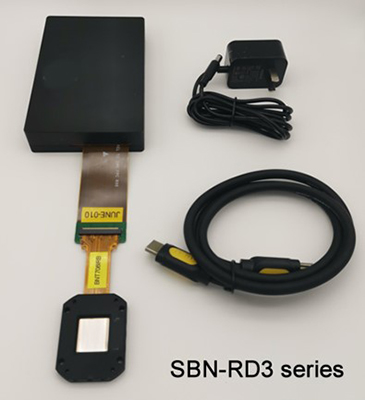
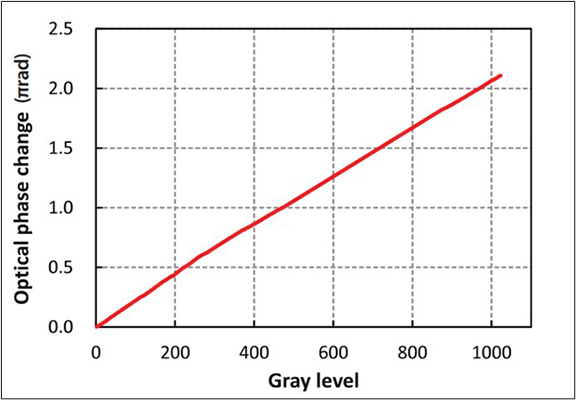
Features:
WUXGA (1920 x 1200) and Full-HD (1920 x 1080) available
Frame rate (60Hz or 120Hz)
Memory function
Triggers-input & output
Applications:
Beam steering
Wavefront correction
Pulse/Beam shaping
Diffractive optics
Optical manipulation
Programmable phase pattern
Technical Specifications:
| Item | min | max | Units | Notes |
| Operating wavelength range | 450 | 1064 | nm | (Refer to AR coating option) |
| Panel size | (H)15.36 x (V)9.60 | mm | Active area | |
| Pixel resolution | (H)1920 x (V)1200 | pixel | ||
| Pixel size/pitch | 8.0 | µm | ||
| Panel reflectivity | Typ.>80 | % | Depending on specified wavelength range | |
| Aperture ratio | 95 | % | ||
| Gray level | 10(1024) | bit | ||
| Frame rate | 60 or 120 | Hz | Factory default setting | |
| Phase depth | 2π | rad. | ||
| Phase stability | Typ. <0.001π | rad. | ||
| Response time | Typ. 300 | ms | ||
| Interface | HDMI | - | 10-bit using RGB 8-bit, 3 colors | |
| Operating temperature range | 15 | 35 | degC | No condensation |
| Storage temperature | 0 | 40 | degC | No condensation |
| Optical power handling | Typ.10 | W/cm2 | @1064nm, CW, 2.0mm beam diameter | |
| Dimensions | 122.6x92.4x25.6 | mm | ||
| Control software | GUI software and SDK for Windows | - | ||
The value is not guaranteed. Please contact us for technical support.
AR-coating Options:
| Item | Parameter | Units | ||||
| Ordering code number | -01 | -02 | -03 | -12 | -14 | - |
| AR coating range | 450-550 | 750-850 | 1000-1100 | 400-700 | 450-550/1500-1600 | nm |
| AR coating reflectance | <0.5 | <1.5 | <0.6 | % | ||
Angle of incidence = 0 degree
Typical laser wavelength 532nm, 630nm, 850nm, 1064nm and wide spectrum 405-1100nm available.
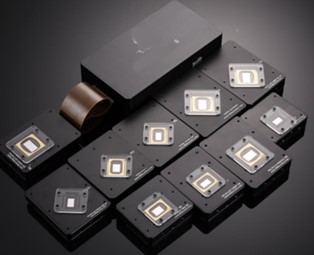
We are mainly engaged in the application technology research and development of digital micromirror spatial light modulator (Digital Micromirror Device-DMD). It is a high-tech enterprise specializing in the research and development, production and sales of hardware and software in digital light process (DLP) related fields such as semiconductor maskless lithography, computational imaging, compressed sensing and 3D detection. Our products include SFG-F3010, SFG-F4100, SFG-F4200, SFG-F4500, SFG-F4710, SFG-F4320, SFG-F6500, F SFG-9000, etc., widely used in scientific research, 3D scanning and LDI industries.
The company has been composed of young and middle-aged technical backbone R & D team, can be said to provide customers with DLP scheme design, DMD drive control system design and other services. At the heart of the digital micromirror spatial light modulator is the digital Micromirror device (DMD), an optical semiconductor module and a MEMS chip in which each lens can be deflected ±10deg, ±12deg or ±17deg respectively, around the hinged shaft. The DMD chip mainly regulates the rotation Angle of each micromirror on the chip according to different digital signals transmitted by the front-end circuit to the CMOS chip, so that the light irradiated on the micromirror can be selectively reflected to the imaging surface for imaging. Since the deflection of the lens is controlled separately by the underlying CMOS control circuit and the binary information of the reset signal of the lens, the optical field digital flower modulation can be realized. Because DMD is reflected by aluminized micromirror, almost no energy absorption, and controlled by CMOS technology, the speed, accuracy, energy and efficiency of light modulation are far more than other spatial light modulators. DMD technology is widely used, including spectral analysis, maskless lithography, 3D measurement, naked eye 3D display, holographic imaging, compressed sensing, biological microscopy, SLA 3D printing, machine vision, etc.
Operation Principle of Digital Micromirror Devices:
At heart of the Digital Micromirror spatial light modulator is the Digital Micromirror device (DMD), an optical semiconductor module and a MEMS chip in which each lens can be deflected ±10°, ±12°, or ±17.5°, respectively, around the articulated shaft. The DMD chip mainly regulates the rotation angle of each micro mirror on the chip according to different digital signals transmitted by the front-end circuit of the CMOS chip, so that the light shin on the micro mirror can be selectively reflected on the imaging surface for imaging. Since the deflection of the lens is controlled solely by the underlying CMOS control circuit and the binary information of the lens reset signal, the digital modulation of the optical field can be realized. Because DMD is reflected by aluminized micro mirror, almost no energy absorption, and controlled by CMOS technology, the speed, accuracy, energy and efficiency of light modulation is far higher than other space light modulators. DMD technology is widely used, including spectral analysis, maskless lithography, 3D measurement, naked eye 3D display, holographic imaging, compressed sensing, biological microscopy, SLA 3D printing, machine vision, etc.
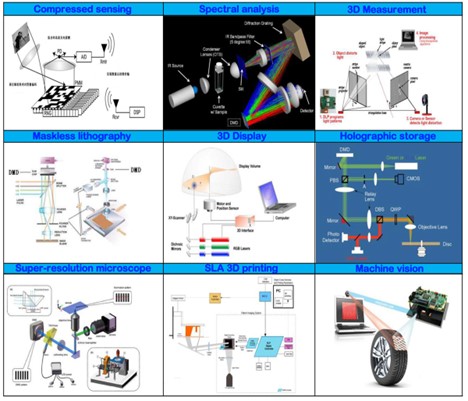
List of Main Products:
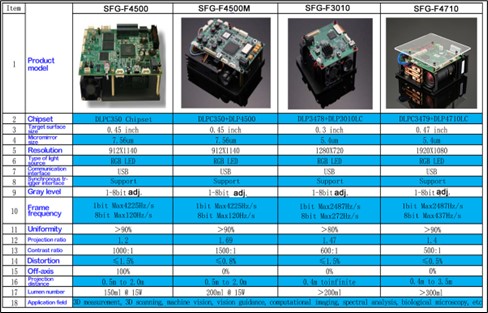
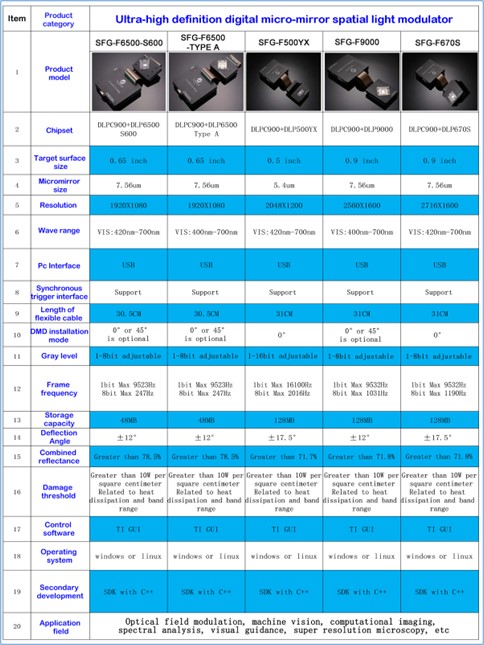
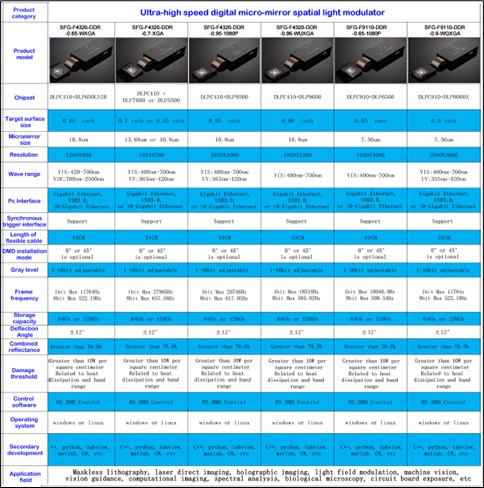
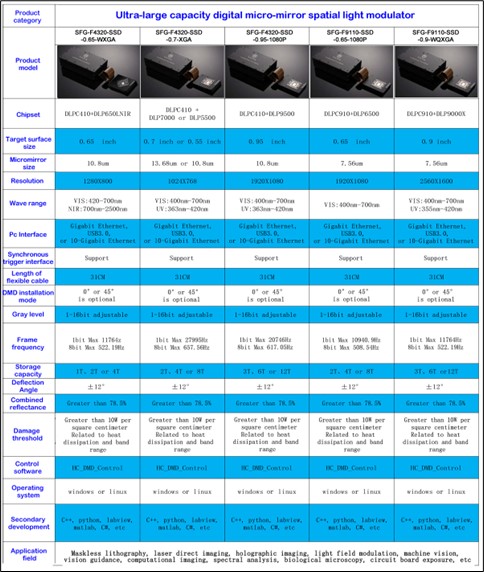
A leading supplier and manufacturer of a wide range of photonics products such as lasers,laser parts & machines.
Office: 18 South Liu Fang Yuan Road, Sintec Industrial Park, Optics Valley of China, Wuhan Hubei, 430205 PR China
Tel: +86 27 51858962
Fax: +86 27 51858989
Whatsapp: 15671598018
E-mail: info@SintecLaser.com
